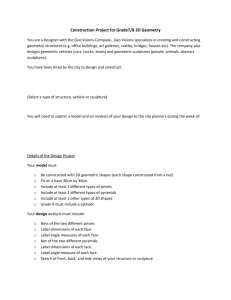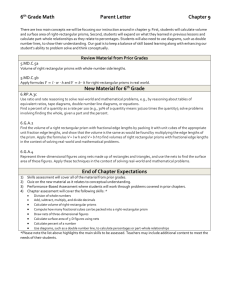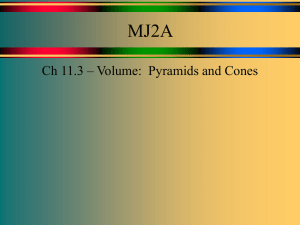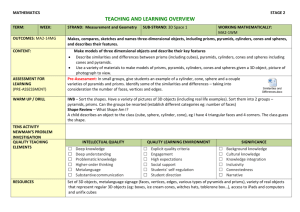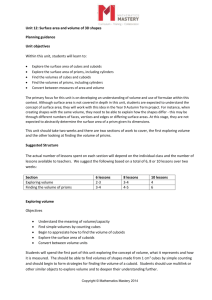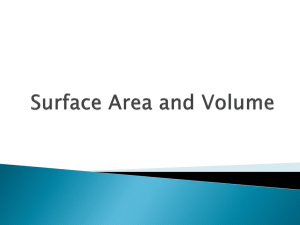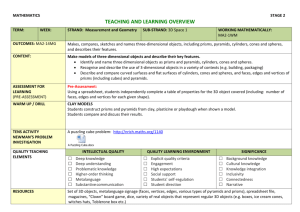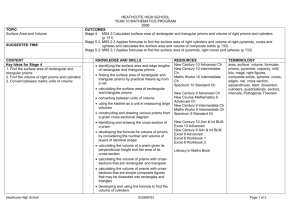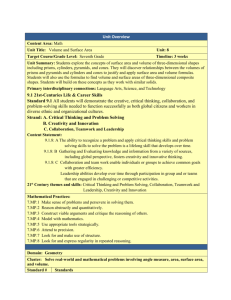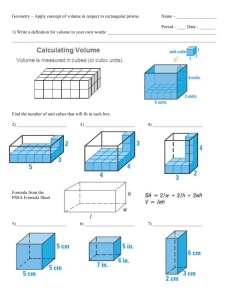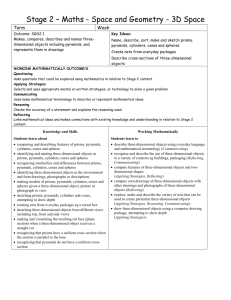3D - Stage 2 - Plan 6 - Glenmore Park Learning Alliance
advertisement
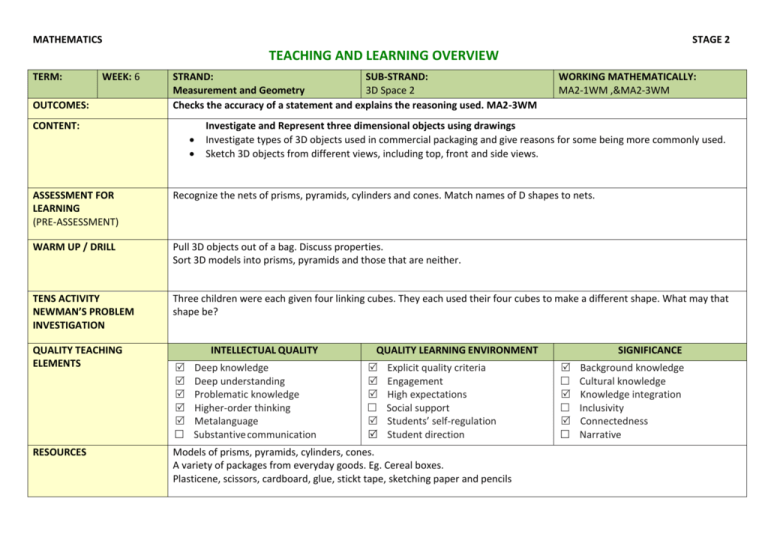
MATHEMATICS STAGE 2 TEACHING AND LEARNING OVERVIEW TERM: WEEK: 6 OUTCOMES: STRAND: SUB-STRAND: Measurement and Geometry 3D Space 2 Checks the accuracy of a statement and explains the reasoning used. MA2-3WM CONTENT: WORKING MATHEMATICALLY: MA2-1WM ,&MA2-3WM Investigate and Represent three dimensional objects using drawings Investigate types of 3D objects used in commercial packaging and give reasons for some being more commonly used. Sketch 3D objects from different views, including top, front and side views. ASSESSMENT FOR LEARNING (PRE-ASSESSMENT) Recognize the nets of prisms, pyramids, cylinders and cones. Match names of D shapes to nets. WARM UP / DRILL Pull 3D objects out of a bag. Discuss properties. Sort 3D models into prisms, pyramids and those that are neither. TENS ACTIVITY NEWMAN’S PROBLEM INVESTIGATION Three children were each given four linking cubes. They each used their four cubes to make a different shape. What may that shape be? QUALITY TEACHING ELEMENTS RESOURCES INTELLECTUAL QUALITY Deep knowledge Deep understanding Problematic knowledge Higher-order thinking Metalanguage Substantive communication QUALITY LEARNING ENVIRONMENT Explicit quality criteria Engagement High expectations Social support Students’ self-regulation Student direction Models of prisms, pyramids, cylinders, cones. A variety of packages from everyday goods. Eg. Cereal boxes. Plasticene, scissors, cardboard, glue, stickt tape, sketching paper and pencils SIGNIFICANCE Background knowledge Cultural knowledge Knowledge integration Inclusivity Connectedness Narrative TEACHING AND LEARNING EXPERIENCES WHOLE CLASS INSTRUCTION MODELLED ACTIVITIES Explain that prisms and pyramids are named according to their bases. Discuss everyday packets and objects shaped like pyramids and prisms and other 3D shapes. Cut a cereal packet and flatten to expose the net. Discuss the shapes that can be seen. How would a cube differ to a rectangular prism? GUIDED & INDEPENDENT ACTIVITIES LEARNING SEQUENCE Remediation S1 or Early S2 LEARNING SEQUENCE S2 Trace around prisms and pyramids then form a net that can be folded. View 3D objects from various viewpoints. Draw 3D objects from various viewpoints. View rectangular prisms made of interlocking cubes. Students attempt to count the hidden cubes. http://www.primaryresources.co.uk/ online/longshape3d.html Cut out simple nets of rectangular prisms and pyramids. Fold along dotted lines to form nets. Count faces edges, corners LEARNING SEQUENCE Students collect boxes then cut and fold them to form nets. The nets of various prisms may be compared and discussed. The nets can be refolded and the shape made inside out. Students could consider whether the same figure can have more than one net. E.g. consider which hexominoes can be folded from a cube. Investigation: Students are given photographs of various objects and are asked to draw one of the objects from a different view. Drawings can be compared and other students have to match the different viewpoint sketches to the original object. Assessment: Construct models of pyramids and prisms using a variety of materials and use formal names to describe them. Match object to their nets. Investigate the way a 3D model can be formed by combining other 3D models. Extension Late S2 or Early S3 Give students isometric drawings on dot paper and ask them to draw what the figure looks like directly from the front , from one side, from the other side and the back. Students build the figure and check the elevations. EVALUATION & REFLECTION Student engagement: Resources: Achievement of Outcomes: Follow up:
